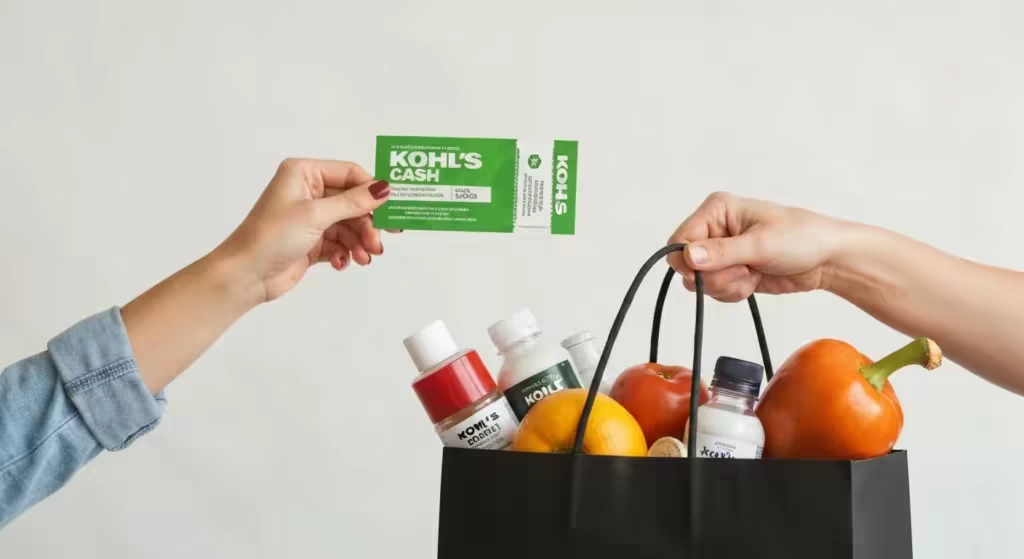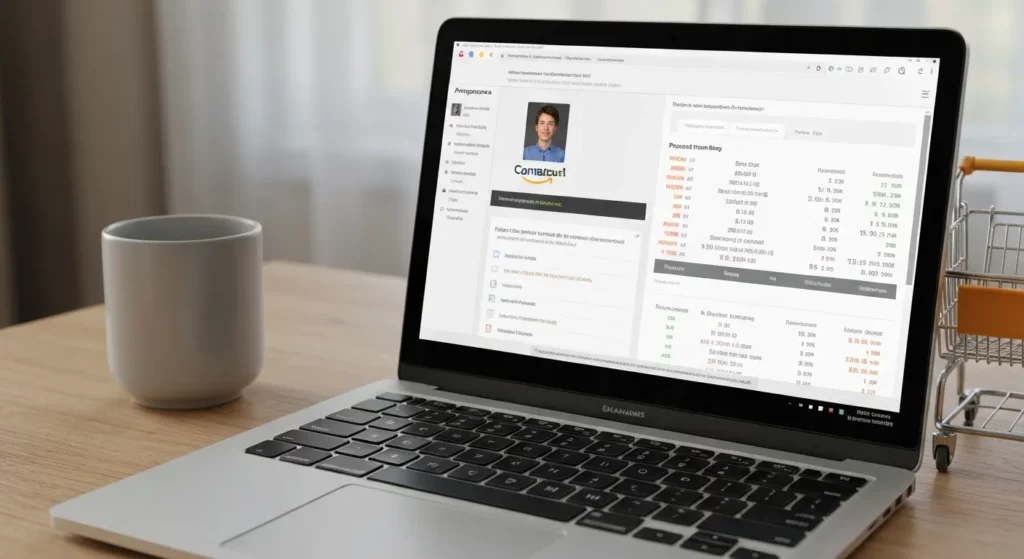The bill sat on the kitchen counter for three days. It wasn’t an angry-looking bill, with red “past due” stamps or threatening language. It was just a plain, unassuming envelope from our auto insurance company. But I knew what was inside. It was the annual renewal notice, and every year, it felt like a small, unwelcome punch to the gut. This year, the punch felt a little harder.
My wife, Susan, and I are retired. We live a comfortable but careful life. We worked hard for decades, saved diligently, and planned for this chapter. Our income is fixed, which means our budget is a well-oiled, if somewhat delicate, machine. Every dollar has a job. When one of our expenses decides to unexpectedly inflate, it throws a wrench in the whole system. That’s what this envelope represented: a wrench.
I finally opened it while sipping my morning coffee. The number stared back at me, a solid $1,800 for a year of coverage on our two sensible, paid-off cars. It was up nearly $150 from the year before. I didn’t understand it. We hadn’t had an accident in over a decade. No tickets. We drive less now than we ever have. So why the relentless climb?
I felt a familiar wave of frustration wash over me. It was the kind of helpless feeling you get when you feel like you’re being taken advantage of, but you don’t know what to do about it. For years, I had just sighed, written the check, and moved on. It was just one of those costs of living, right? But this time was different. Maybe it was the extra sting of the increase, or maybe it was just a cumulative effect of years of passive acceptance. I looked at that bill, then at the neat stack of other bills waiting their turn, and a new feeling started to bubble up: determination.
“You know, Susan,” I said, holding up the paper. “I’m tired of this. I’m tired of just paying whatever they tell us to pay. We’ve been with this company for over twenty years. What has that loyalty gotten us?”
She nodded, her expression mirroring my own frustration. “What are you going to do?”
“I’m going to figure it out,” I replied, not entirely sure what that meant. “I’m going to look at everything. I’m going to lower our insurance costs.”
That simple declaration on a quiet Tuesday morning was the start of a journey. It was a journey that took more time and effort than I expected, but one that ultimately saved us a significant amount of money and, more importantly, gave me a renewed sense of control over our financial lives. This is the story of how I did it.
The Great Bill Hunt: Confronting the Paperwork Monster
My first step was to understand the full scope of the problem. I knew we had auto insurance. I knew we had homeowners insurance. But if you had asked me exactly who they were with, when they renewed, or what we were paying, I would have had to do some digging. It was time to dig.
I designated the dining room table as my command center. I started by pulling out the auto insurance bill that had started it all. Then I went to our filing cabinet, a piece of furniture that held a lifetime of paperwork, and began the hunt. I pulled out the thick packet for our homeowners policy. I found a statement for a personal liability umbrella policy that, I’ll be honest, I had almost forgotten we had. I think an agent recommended it to us years ago and we just kept paying for it.
I spread all the documents out on the table. It was a chaotic mess of different company logos, different policy numbers, and different renewal dates. It was immediately obvious why I’d never tackled this before. It was intimidating.
But I had my coffee and my resolve. I grabbed a legal pad and a pen and started making a list, like an accountant taking inventory. Here’s what my financial landscape looked like:
- Auto Insurance: With a company I’ll call “ABC Insurance.” We had been with them since our kids were learning to drive. The annual premium was now $1,800. It renewed every November.
- Homeowners Insurance: With a different company, “XYZ Mutual.” We’d had them since we bought our house 30 years ago. The annual premium was a staggering $2,500. It renewed in April.
- Umbrella Policy: This was with a third company, “DEF Assurance.” This policy provided extra liability coverage on top of our home and auto. The annual premium was $400. It renewed in July.
I did the math. My hand almost hesitated as I wrote down the total. We were paying $4,700 a year for insurance. That was nearly $400 a month, every single month, vanishing from our budget.
Seeing it all laid out like that was a shock. For the first time, I wasn’t just looking at one bill. I was looking at the entire picture. Three different companies. Three different payments. Three different renewal dates to keep track of. It felt messy, inefficient, and expensive.
The most galling part was the realization about loyalty. We had been faithful customers, paying on time, year after year. We thought that meant something. But looking at these steadily increasing numbers, I came to a hard conclusion: our loyalty wasn’t being rewarded. It was being monetized. These companies seemed to be counting on us to be too busy, too confused, or too complacent to question the annual creep of their prices. And for years, they had been right.
Staring at that total on my legal pad, I felt a flash of anger, but it was quickly replaced by a stronger feeling: I was on the right track. This messy, expensive system was the problem. And I was going to find the solution.
My First Move: The “Loyal Customer” Phone Call
Armed with my newfound clarity, my first instinct was to start with what seemed like the path of least resistance. I decided to call our auto insurance provider, ABC Insurance. After all, they were the ones who sent the bill that started this whole thing. I thought, maybe if I just call and ask, they’ll lower the rate. We were 20-year customers, for goodness sake.
I rehearsed my little speech in my head. I’d be polite but firm. I’d mention our long history with the company, our perfect driving record, and the fact that the new premium felt too high. I was confident they’d want to keep our business.
The call itself was an exercise in patience. First, there was the automated phone tree. “Press 1 for claims. Press 2 for billing. Press 3 for policy changes…” I navigated the maze, finally getting to the option for speaking with a representative. Then came the hold music. It was a tinny, generic tune that seemed designed to slowly chip away at your will to live.
After about fifteen minutes, a pleasant but rushed-sounding woman named Jessica answered. I launched into my prepared speech.
“Hi Jessica,” I began. “My name is Robert, and I’m calling about my auto insurance renewal. My wife and I have been with ABC Insurance for over twenty years, and I was a bit surprised by the new premium. It’s gone up quite a bit, and we have a perfect driving record. I was hoping you could take a look and see if there are any discounts we might be missing or anything you can do to lower our insurance costs.”
There was a flurry of typing on the other end. “Okay, Mr. Smith, I have your policy right here. Yes, I see you’ve been with us for a long time. We really appreciate your loyalty.”
Great, I thought. Here we go.
“Let me just see what we can do,” she said. More typing. A long pause. “Well, it looks like you already have a few of our discounts. You have the multi-car discount and the good driver discount.”
“Okay,” I said, waiting for the ‘but.’
“The rates in your area have generally increased this year due to rising repair costs,” she explained, using a very rehearsed-sounding line. “There isn’t much I can do about the base rate, but… let’s see… you could qualify for another small discount if you were to complete an approved defensive driving course. That could save you about $50 a year.”
I was floored. Fifty dollars? I was paying $1,800. A $50 discount in exchange for me spending a weekend in a classroom felt less like an offer and more like an insult. The message was clear: they weren’t going to budge.
“That’s it?” I asked, my disappointment evident in my voice.
“I’m afraid so, sir. Those are the best rates we have available for your policy right now,” she said, her tone signaling that the conversation was, for all intents and purposes, over.
I thanked her for her time and hung up the phone, feeling deflated. My initial strategy had failed completely. My two decades of loyalty had been valued at fifty bucks. It was a sobering moment. But as the initial disappointment faded, it hardened into resolve. Fine. If my current company wouldn’t help me, I would find one that would. The “path of least resistance” was a dead end. It was time to blaze a new trail.
Hitting the Books: My Weekend of Insurance Research
That phone call was a crucial turning point. It taught me my first big lesson: I couldn’t just ask for a better price; I had to create leverage. And the only way to do that was to become an informed shopper. I was no longer just a “loyal customer.” I was a free agent, and I was going to see what the open market had to offer.
That weekend, I turned my dining room command center into a research hub. I told Susan I was going to be busy, and I dove headfirst into the world of personal insurance. I fired up my laptop and started with a simple search: “how to lower insurance costs.”
I felt like I was back in college, studying for a final. I read articles on sites like this one, on financial blogs, and on consumer advice websites. A term I had heard before but never really explored kept popping up again and again: bundling.
The concept was simple. Insurance companies love it when you buy multiple policies from them. They want to be your one-stop shop for auto, home, and more. To incentivize this, they offer a multi-policy discount, often called a “bundle discount.” It seemed so obvious now, looking at my list of three different companies for three different policies.
I learned a few key things during my research:
- Bundling is a significant discount. Most sources said it could save anywhere from 5% to 25%. On a total bill of $4,700, that was potentially over a thousand dollars. That number got my attention.
- It simplifies your life. The idea of having one company, one bill, and one agent to call for everything was incredibly appealing. No more juggling renewal dates and company phone numbers.
- You have to compare apples to apples. This was critical. If I was going to get quotes, I needed to make sure each new quote had the exact same coverage levels as my current policies. A cheaper price is no good if it comes with dangerously low liability limits or a massive deductible I can’t afford.
Feeling empowered with this new knowledge, I moved to the next phase: preparation. I created a simple document on my computer. At the top, I listed my current coverage details with precision.
My “Apples-to-Apples” Checklist:
Auto Insurance:
- Bodily Injury Liability: $250,000 per person / $500,000 per accident
- Property Damage Liability: $100,000
- Collision Deductible: $500
- Comprehensive Deductible: $500
- Uninsured/Underinsured Motorist Coverage: Matching liability limits
Homeowners Insurance:
- Dwelling Coverage: $350,000 (I checked my last appraisal for this)
- Personal Property Coverage: 70% of dwelling coverage
- Liability Coverage: $500,000
- Deductible: $1,000
Umbrella Insurance:
- Coverage Amount: $1,000,000
I also gathered all the other necessary information: our birthdays, our driver’s license numbers, the Vehicle Identification Numbers (VINs) for both cars, and the address and age of our home. I was building my arsenal. I was no longer going into these conversations blind. I was prepared. I knew what I had, I knew what I needed, and I knew what I wanted to ask for: a single, bundled quote for everything.
By the end of the weekend, I felt a complete shift in my mindset. I had gone from a frustrated, passive bill-payer to an educated, proactive consumer. I was ready to make some calls.
Making the Calls: A Tale of Two Agents
Monday morning arrived, and I was ready. With my detailed checklist in front of me, I started the process of shopping for a bundled insurance policy. My plan was to call a few of the big national companies I saw in commercials all the time, the ones that promised low rates.
My first call was to a massive, well-known insurer. The agent on the phone was efficient, almost to a fault. He had a smooth, fast-paced rhythm, clearly trained to get through calls quickly.
“Okay, Robert,” he said after I explained my situation. “Let’s get you a quote. Car one VIN?”
I gave him the information. He rattled through the questions, plugging my data into his system. When I gave him my coverage requirements from my checklist, he seemed almost surprised. “Wow, you’re really prepared,” he commented.
He crunched the numbers and came back with a figure. It was good. It was definitely better than my current total. The bundled price for home, auto, and umbrella was around $3,500. That was a $1,200 savings. I was excited, but also a little wary. The entire conversation felt transactional, like I was buying a commodity, not planning for my family’s financial safety.
“That sounds great,” I said. “Can you email me that quote so I can review the details?”
“Absolutely,” he replied, already sounding like he was moving on to the next call. I thanked him and hung up. The price was tempting, but the experience left me feeling cold. Was this the person I wanted to call if my house was damaged in a storm?
As I was thinking about my next move, I remembered something I had read during my research weekend: the idea of an independent insurance agent. Unlike a “captive” agent who works for only one company (like the guy I just spoke to, or my old agents at ABC and XYZ), an independent agent works with multiple insurance companies. They don’t work for the insurer; they work for the client. Their job is to shop the market for you.
This seemed like a brilliant idea. Why should I have to make all these calls myself when I could have a professional do it for me? I did a quick online search for “independent insurance agent near me” and found a local agency with excellent reviews. I decided to give them a call.
The difference was night and day.
A woman named Maria answered the phone. She didn’t rush me. She listened patiently as I explained my entire story—the frustrating renewal, the audit of my bills, my research. She didn’t just ask for VINs and coverage limits; she asked about us.
“So you’re both retired, Robert?” she asked warmly. “Do you do much traveling? Do you have grandchildren who visit often? Do you have any valuable items like jewelry or art that we need to make sure are properly covered?”
She was taking a holistic view of our life. She wasn’t just trying to sell me a policy; she was trying to understand our risks and ensure we were protected. She explained why the umbrella policy was so important for someone in our position, with a lifetime of assets to protect. She confirmed that my coverage limits were appropriate and didn’t try to upsell me on things I didn’t need.
After about 20 minutes of this thoughtful conversation, she said, “Okay, Robert, you’ve given me everything I need. You’ve done your homework, which makes my job much easier. Here’s what I’m going to do: I’m going to take your information and shop it with about a dozen different A-rated carriers that I work with. I’ll find the company that offers the best combination of coverage and price for your specific situation. Give me a day or two, and I’ll call you back with a few options to review.”
I hung up the phone feeling a profound sense of relief. For the first time in this process, I felt like I had an ally. I had a professional in my corner, doing the legwork for me. The contrast with my previous calls was stark. One was a race to a price; this was a partnership to find a solution. I decided to pause my own search and wait to see what Maria came back with.
The Big Reveal: Seeing the Savings in Black and White
Two days later, just as she promised, Maria called back. There was an excitement in her voice that was contagious.
“Robert, I have some great news for you,” she began. “I ran the numbers with several carriers, and I found a fantastic option. It’s with a highly-rated company known for excellent customer service and claims handling. And the price is even better than I hoped.”
She had my full attention. She walked me through the quote she had prepared, emailing it to me so I could see it for myself. It was a single, bundled policy that included our two cars, our home, and our umbrella policy. And she had made sure every single coverage limit and deductible matched my “apples-to-apples” checklist perfectly.
Then, she got to the bottom line. The total annual premium.
I want to lay this out clearly, just as I did on my legal pad, because seeing the numbers side-by-side was the moment everything clicked into place.
My Old, Unbundled Insurance Costs:
- ABC Auto Insurance: $1,800
- XYZ Homeowners Insurance: $2,500
- DEF Umbrella Insurance: $400
- TOTAL ANNUAL COST: $4,700
Maria’s New, Bundled Insurance Quote:
- Combined Auto + Home + Umbrella Policy:
- TOTAL ANNUAL COST: $3,200
I stared at the numbers on the page. I did the math in my head, then again on a calculator to be sure. The total annual savings was $1,500. That’s $125 every single month that would now stay in our pockets.
I was speechless for a moment. “Are you serious?” I finally asked. “That’s a huge difference.”
“It certainly is,” Maria said. “That’s the power of bundling, and of shopping the market. You were paying what I call a ‘loyalty tax’ by staying with three different companies that kept inching up your rates over time. By combining them and finding the right carrier for your profile, we were able to get you the same, or in some areas slightly better, coverage for a much lower price.”
The process of making the switch was incredibly simple. Maria handled everything. She helped me set up the new policy and then walked me through canceling the old ones. It involved a couple of phone calls and signed letters, but it was painless. Within a week, my decades-old, fragmented, and overpriced insurance setup was replaced by a single, streamlined, and affordable policy.
That evening, I showed Susan the final paperwork. When she saw the savings, her eyes lit up. It wasn’t just about the money itself. It was about the freedom that money represented. “That’s our trip to see the grandkids in the spring,” she said with a smile. “With some left over.” It felt like a true victory, a tangible reward for the time and effort I had put in.
What I Learned on My Journey to Lower Insurance Costs
Looking back, this whole experience was about so much more than just saving $1,500. It was a powerful lesson in personal finance and self-advocacy. I started this journey feeling frustrated and powerless, and I ended it feeling empowered and in control. Here are the most important lessons I learned along the way.
Lesson 1: Loyalty Doesn’t Always Pay (and Can Actually Cost You)
This was my biggest and most painful realization. I come from a generation where loyalty was a virtue. You stuck with your bank, your mechanic, your insurance company. I assumed that my decades of on-time payments would earn me preferential treatment. I was wrong. For many large corporations, customer inertia is a feature, not a bug. They often save their best rates for new customers while slowly raising prices on their existing, loyal base, counting on the fact that most people won’t go through the hassle of shopping around. My loyalty was costing me a fortune.
Lesson 2: You Have to Be Your Own Financial Advocate
No one is going to knock on your door and offer to save you money. No company is going to call you and say, “Hey, you’re overpaying, let us fix that for you.” If you want to improve your financial situation, you have to take the initiative. You have to be the one to ask the tough questions, to do the research, and to challenge the status quo. It takes effort, but the feeling of taking control of your own finances is priceless.
Lesson 3: Knowledge Is Your Greatest Tool
Walking into those phone calls armed with my “apples-to-apples” checklist changed the entire dynamic. I was no longer a confused customer asking for a handout. I was an informed consumer negotiating from a position of strength. Taking a few hours to understand the basics of my policies and what bundling meant made all the difference. Don’t be intimidated by the jargon; a little bit of research goes a very long way.
Lesson 4: Bundling Is About More Than Just the Discount
Yes, the savings were the main motivator, but the simplification that came with bundling was a massive, unexpected bonus. Now, I have one company to deal with. One bill to pay. One renewal date to remember. If I have a question about my car or my house, I make one phone call to one person—Maria. The peace of mind that comes from that simplicity is a benefit all on its own.
Lesson 5: An Independent Agent Can Be Your Secret Weapon
For me, this was the key that unlocked everything. I could have continued calling individual companies myself and probably would have saved some money. But finding Maria, an independent agent, was a game-changer. She did the heavy lifting, used her professional expertise and access to multiple carriers, and acted as my personal advocate. If you’re feeling overwhelmed by the process, I cannot recommend highly enough that you seek out a well-regarded independent agent in your area. They work for you.
This project, which started with a single frustrating bill, has changed my perspective on how I manage our finances in retirement. It reminded me that even with a fixed income, there are always opportunities to be smarter, more efficient, and more engaged with your money. It’s not about being cheap; it’s about being wise. And that single success has inspired me to look at our other recurring expenses—from cable bills to phone plans—with the same critical eye.
If you’re reading this and you feel that same sense of frustration I felt staring at that renewal notice, I hope my story gives you a bit of encouragement. The system may seem complicated and intimidating, but it’s not unbeatable. All it takes is a little bit of time, a little bit of research, and the decision to be your own best advocate. If I can do it, you absolutely can, too.














